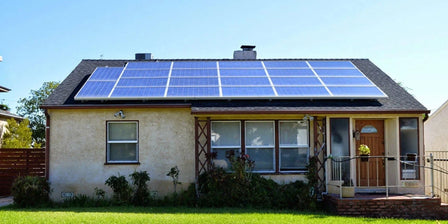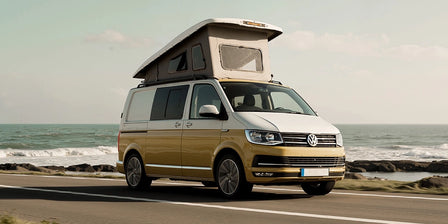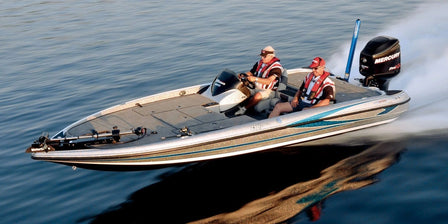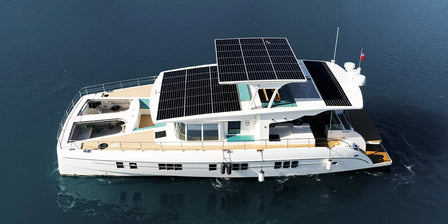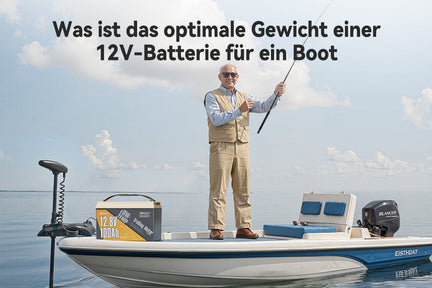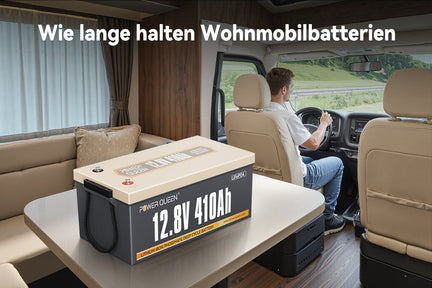Motorhome battery doesn't load? Here is the solution!
If the battery of your motorhome or caravan connected to shore power isn't charging, there are a few steps you can take to fix the problem. You don't need to resort to expensive professionals.
Checking the wiring and fuses
Check the motorhome Check the cabling leaving the converter and ensure that each cable is thoroughly inspected. Note the following:
- Any loose or damaged wires
- Signs of melting or discoloration
- Exposed wires that come into contact with each other
- If any loose connections are found, secure them accordingly. Replace any damaged cables and check if your motorhome's batteries are now charging.
Take this opportunity to check for any blown inline fuses and replace them immediately if necessary.
Note: When replacing fuses, be careful and ensure the amperage remains constant. Using a fuse with a higher amperage could cause overheating and a potential fire hazard in your RV.
Also, assess the condition of the cables and fuses connected to your RV battery. Are there any signs of fraying, looseness, discoloration, or contact between the wires? Are any inline fuses blown? Replace them accordingly.
In complex RV electrical systems, referring to a wiring diagram can prove useful, although finding one can be difficult, if not impossible. Check your owner's manual or the manufacturer's website to see if one is available.
Checking the condition of the battery for corrosion
We will then inspect the battery terminals for any noticeable signs of corrosion and check that the battery cables are securely attached to the battery terminals.
In my experience, this is one of the main causes of interrupted power transmission to the home batteries when the vehicle is plugged into the power outlet.
Of course, it is essential to eliminate loose connections and remove visible signs of corrosion.
How to effectively clean corroded battery terminals:
- Make a thick mixture by mixing two tablespoons of baking soda with an equal amount of water.
- Disconnect the power and ground cables from the battery terminals.
- Thoroughly clean the terminals and cable connections with a wire brush and the paste to remove the corrosive substances.
- Then wipe the poles thoroughly with a paper towel.
- Reconnect the power and ground cables to the respective battery terminals to ensure a firm and secure connection.
If your motorhome battery still does not charge, we can proceed to the next step.
Testing the circuit breaker
Locate the fuse and breaker panel in your RV, which is usually located in the same compartment as the power converter.
Look for circuit breakers on the electrical panel, similar to those you would find in a household. These breakers specifically control the 120V Your RV's system. To check their functionality, make sure none of the breakers have tripped by gently touching them and checking their correct position.
Tip: Refer to your owner's manual or look near the breakers for signs that indicate the purpose of each breaker.
In the same area, you may also find the RV's fuse box, which is similar to the fuses in cars. Examine these fuses thoroughly to see if they may be blown. If you find any blown fuses, replace them immediately and check if your RV's batteries recharge after plugging in the power cord.
If all circuit breakers are properly turned on and the fuses remain intact, you can proceed to the next step.
Testing the battery disconnect switch
Many motorhomes and fifth wheel trailers are equipped with a battery disconnect switch located inside the vehicle. Make sure this switch is in the "on" position.
To check for the presence of a battery disconnect switch and determine where it is located, you may need to refer back to your owner's manual.
Checking the condition of the LiFePO4 battery
Next, we need to make sure the cause of the problem isn't the battery itself. It's possible that your motorhome's charging mechanism is working efficiently, but the battery isn't retaining its charge.
Checking your RV battery is a simple process:
-
Connect your battery to a battery charger to start charging. If you don't have access to a battery charger during your trip, you can also use your RV or tow vehicle's alternator for charging, provided your RV is compatible.
-
Use the battery disconnect switch mentioned above to disconnect the battery from the system and thus isolate it from the mains.
-
Wait a few hours. After that, you can use a digital multimeter or voltmeter to determine the battery's charge level.
-
If you notice a significant loss of battery charge within this short period of time, it's likely that the battery itself is faulty. Replace the deep-cycle battery and then recheck your RV's charging system.
If the battery passes the test, there is only one more troubleshooting step left.
Testing the functionality of the power converter
First, check if your converter is successfully producing a steady current of 13+ DC. You can do this by measuring the voltage at the battery while it's connected to a shore power source.
Using a voltmeter, you should be able to read an approximate value of 13.5 volts on the battery.
Disconnect your motorhome from shore power and perform another voltage measurement on the battery. At this point, a voltage drop should be noticeable. sein.Mit This quick test will help you determine if your inverter is working properly.
If it unfortunately does not fulfill its purpose, various problems such as a defective cooling fan, a faulty temperature sensor or a defective circuit board can be the cause.
It is not advisable for non-professionals to attempt to disassemble or tamper with the converter. Instead, it is strongly recommended to consult a certified RV technician who can professionally repair the problem using their expertise.
Malfunction of resistors or diodes
Resistors and diodes play a crucial role in converting the electrical source from AC to DC voltage. However, they are prone to failure when exposed to high temperatures. A burnt component on the circuit board is a visible sign of this. If you are not familiar with electrical systems, it is advisable to have a qualified professional replace these defective parts.
Interruption of shore power supply
Instead of hastily attributing the charging problem to your battery, it's important to check the integrity of the power column, especially if it's located in an RV park. Power columns can also burn out or become damaged, potentially hindering your battery's charging process. If you have a problem with the power connection, you must notify the park management immediately so they can address and resolve the issue.
Maintenance tips for your motorhome battery
If you're still using a conventional lead-acid battery, regular maintenance is crucial to ensure optimal performance. Consider the following methods:
-
A fully charged 12V battery typically reads 12.6 volts. A 75% state of charge typically reads 12.4 volts, while a 50% battery reads 12 volts. To prolong the life of your lead-acid battery, it is strongly recommended not to discharge it below the 50% threshold. If your vehicle doesn't have a battery gauge that provides accurate voltage readings, we recommend purchasing a multimeter to measure the battery's state of charge.
-
Make it a habit to inspect the battery regularly and carefully check for signs of corrosion. Maintain cleanliness and ensure that cable connections are secure. If you have lead-acid batteries with healthy cells, closely monitor the water level in the battery filler holes and top up with distilled water as needed.
-
Keep in mind that these batteries can experience self-discharge of up to 1 volt per month. Keeping the voltage indicator above the 50% threshold will significantly extend the battery's lifespan. Always keep the battery connected to an external power source and charge it periodically. In situations where this option isn't available, or if you plan to store the battery, using a battery charger or a 12-volt solar charger may be beneficial.
Consider upgrading your RV batteries with maintenance-free lithium iron phosphate (LiFePO4) batteries.
These batteries offer several advantages, including longer lifespans, faster charging times, and higher energy density. They are also lighter and more compact, making them an excellent choice for RV owners looking to reduce weight and maximize storage space.
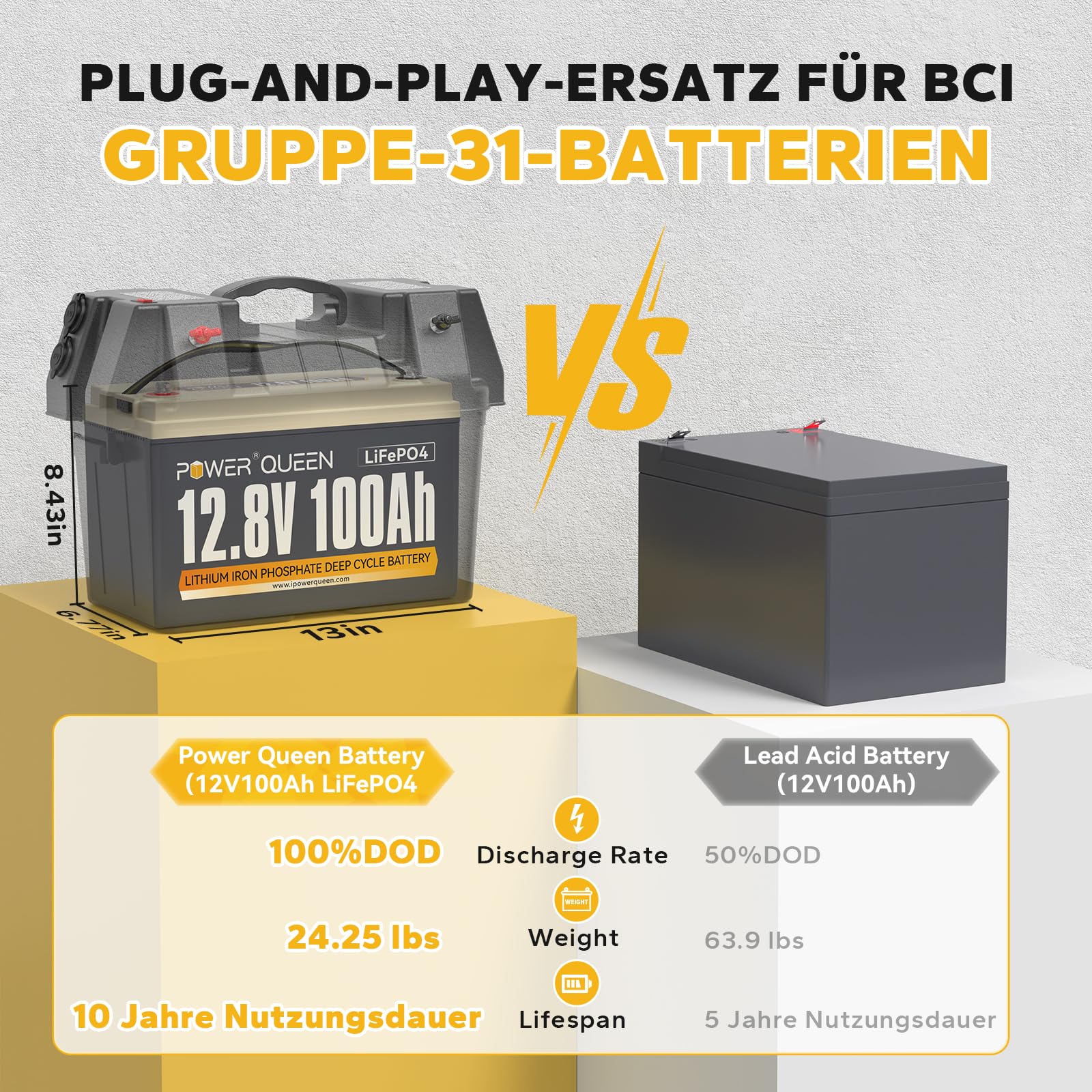
When using lithium batteries, it's important to follow the manufacturer's charging and maintenance guidelines. Unlike lead-acid batteries, lithium batteries don't require regular maintenance, such as checking the water level or cleaning the terminals. However, it's important to keep them clean and dry to avoid potential problems.Learn more about how to charge LiFePO4 batteries and how to store them.
In addition, it is recommended to invest in a high-quality Battery management system (BMS) specifically designed for lithium batteries. A BMS helps monitor and protect the battery from overcharging, overdischarging, and temperature fluctuations to ensure its longevity and safety. All LiFePO4 batteries from Power Queen are equipped with a BMS, they are safe to use.
Conclusion
In summary, proper maintenance and responsible use of trolling motors and RV batteries are crucial to minimizing our carbon footprint and protecting the environment.
By choosing energy-efficient engines, using rechargeable batteries, and avoiding idle time, we can save energy and reduce emissions. Electric motors offer numerous advantages over gasoline engines, including lower emissions and noise pollution.
It's important to properly size the motor for efficient operation and dispose of old batteries responsibly to avoid environmental pollution. Regular maintenance, such as cleaning and securing terminals, monitoring voltage levels, and considering upgrading to lithium batteries, can extend the lifespan and performance of RV batteries.














